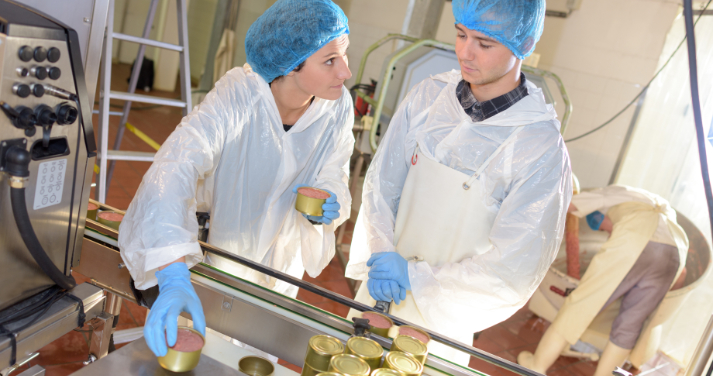EHSQ Management: The benefits of self-checking

At the time of the digitization of processes, the “Zero paper” and the Industry 4.0, it is important to remember that the creation of value in a company should only be attributed to the knowledge and the expertise of women and men. Expertise that should be valued through the implementation of self-checking.
Indeed, who is in the best position to detect failures, small defects, if not those who are working in the operations implementation?
So, if you are wondering about the involvement of your operators in their daily work, or the impacts of this commitment on the production flow, or how to give more sense to their work, self-checking will give you the answers. This method detects failures very quickly. Moreover, it perfectly matches Industry 4.0.
Self-checking: the main principles
The first principle is to detect failures as soon as possible.The checking is done by the one who has just made all or part of a product, hence the term "self-checking". If they detect an anomaly, a malfunction, a failure, then the idea is to trigger an immediate search for causes.For this, there are several fast techniques for finding causes (QRQC, 5Ws, 5M ...). The solution implementation is done immediately, with always in mind: Is my customer safe? In what state is my stock? Do I have orders in progress? Is the problem critical? With this self-checking and the reflexes of search and problem-solving, waste is limited.
The second principle of self-checking is accountability and involvement.Indeed, the realization of the checking by a collaborator implies accountability.Through their expertise and knowledge, they will judge the quality of their work for themselves. Of course, when perceiving an anomaly, the first questions that should come in mind is: "What happened? I want to understand why." The idea is not the "policing", but on the contrary, to highlight the professionalism. A guarantee of quality of work and trust for their colleagues who will take over.
Finally, the third principle is the reduction of the final control time. The addition of self-checking operations allow significantly time saving. As that last operation can be reduced to a simple aesthetic control. Self-checking only works if there are means to make sure there are no drifts along some time. This can be field audits for example.
Self-checking: implementation
Before starting, it is fundamental to do a test by choosing a sector. To do this, apply the step-by-step method. You have two options for the sector. Choose a sector with a large number of rejects. In this case the auto-checking will address it but it will require a quite long time of preparation and implementation. Another option is to choose a sector where implementation will be easy with immediate results. You got it ... what matters is to show the effectiveness of the method.
Don’t just “do your own thing”, work in a team, with the operators, the method department, maintenance department, quality ...
To begin with, the team analyzes the existing by asking the following questions:
- - What is the existing checking system?
- - Are they relevant and sufficient?
- - Are the tolerances justified?
- - What means are available?
Next, it is necessary to choose the operations that will undergo auto-checking. Which ones will undergo automatic control or “coding” (or "Poka-yoke"). And which ones will be the subject of specific controls?
Quality control does not bring any added value to the production, it is necessary to limit the number of characteristics of the auto-checking and thus to choose the most critical ones.Indeed, the most important characteristics are often those related to the production costs of the product such as functional dimensions or those that guarantee the conformity of the product.Use the Quality department and the Research Office to define these "critical characteristics".
Formalize your self-checking
In order to ensure the sustainability of your self-checking, you must formalize it. It therefore requires writing procedures and / or instructions and defining THE MEANS to achieve them. Again, you have to ask the right questions. Are the current means of control sufficient to control the parts? Is it possible to create simple controls such as templates or visual aids to facilitate control?
It may be wise to define the operating modes explaining how to use the means.
It is also necessary to introduce self-checking operations into the production lines and to detail the control operations. Indeed, the instructions must be schematic and adapted to the operator. Give preference to pictures (or even videos) and do not forget to integrate your documents into the company's DMS.
At that time, the digitization of your Quality system will be your organization’s strength. The documents will become interactive, entertaining. A dedicated solution (such as BlueKanGo) accessible on tablet will be useful at the workstation. The operator interacts directly with the system, records the result of their control or declares a nonconformity in real time.
Registration is also essential in this process to ensure that the system will not drift. Without records, there will be no stats or SPC (Statistical Process Control). It may also be useful to bring these records during audits. Let’s also remind ourselves that the search for evidence (through recordings) is a requirement of the new version of the ISO. Finally, these recordings allow for upward and downward communication of quality results.
Strengthen employees’ commitment
A crucial phase in the implementation of self-checking: get all employees involved! For this, we must accompany them and train them in the process ... explain it, commit to dates for the official start. Don’t forget to communicate the deployment plan to the teams so that they project themselves in time.
Working group also plays an important role. It will train the operators on the means of control and the operating mode. Of course, keep an evidence of the training you have done internally with the help of your HR department.
When you get to this point, you can then launch the tool for the test phase. Of course, you will monitor daily the quality results on your dashboard, with a before-after comparison, and the goal to achieve. If you have reached the goal for three months in a row then you may consider deploying the method more widely in other areas of your choice.
Learn more:
Crédit Photo : Fotolia.com
Label(s) : self-checking, Industry 4.0, Zero paper, process
















No comment